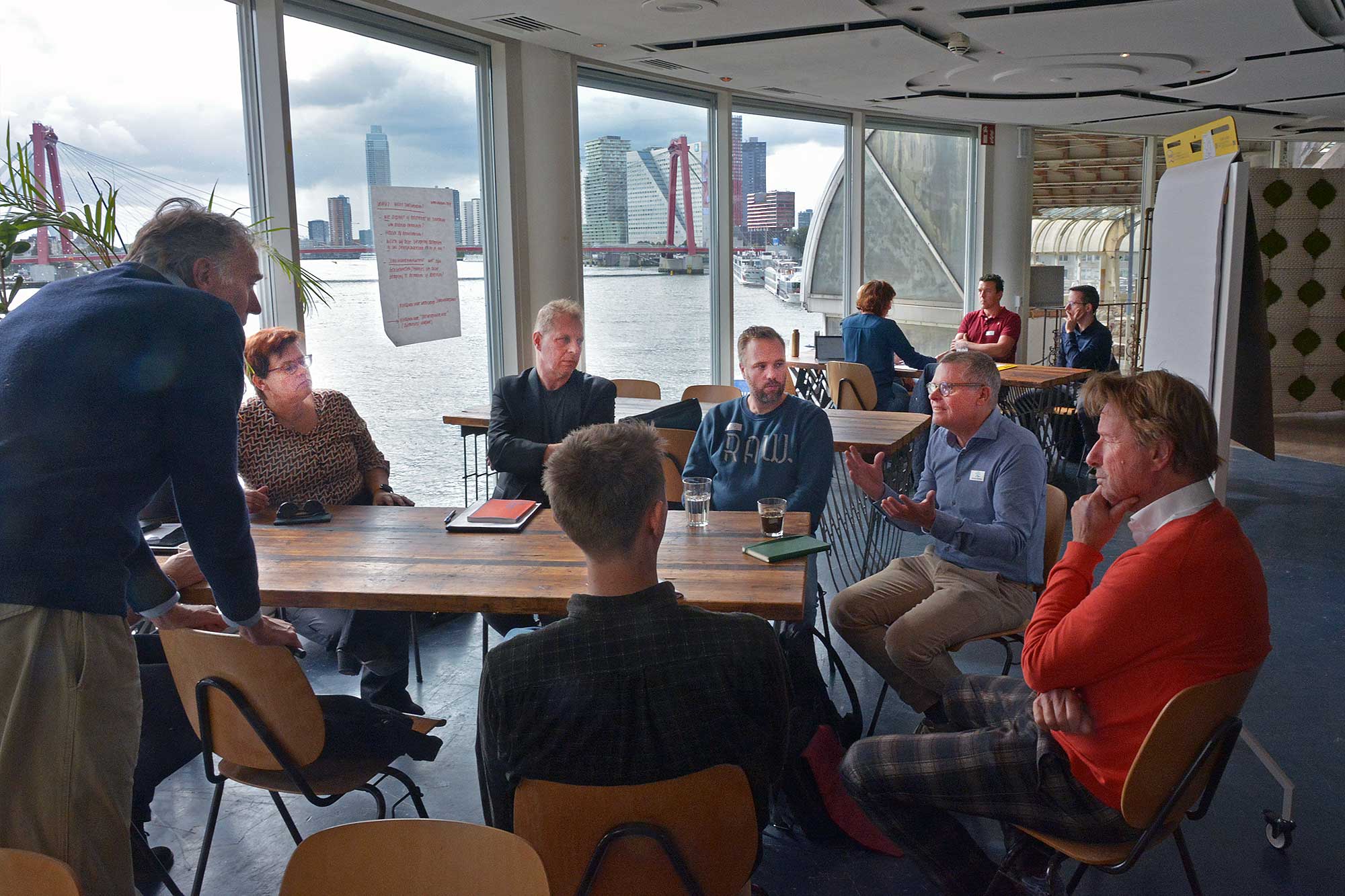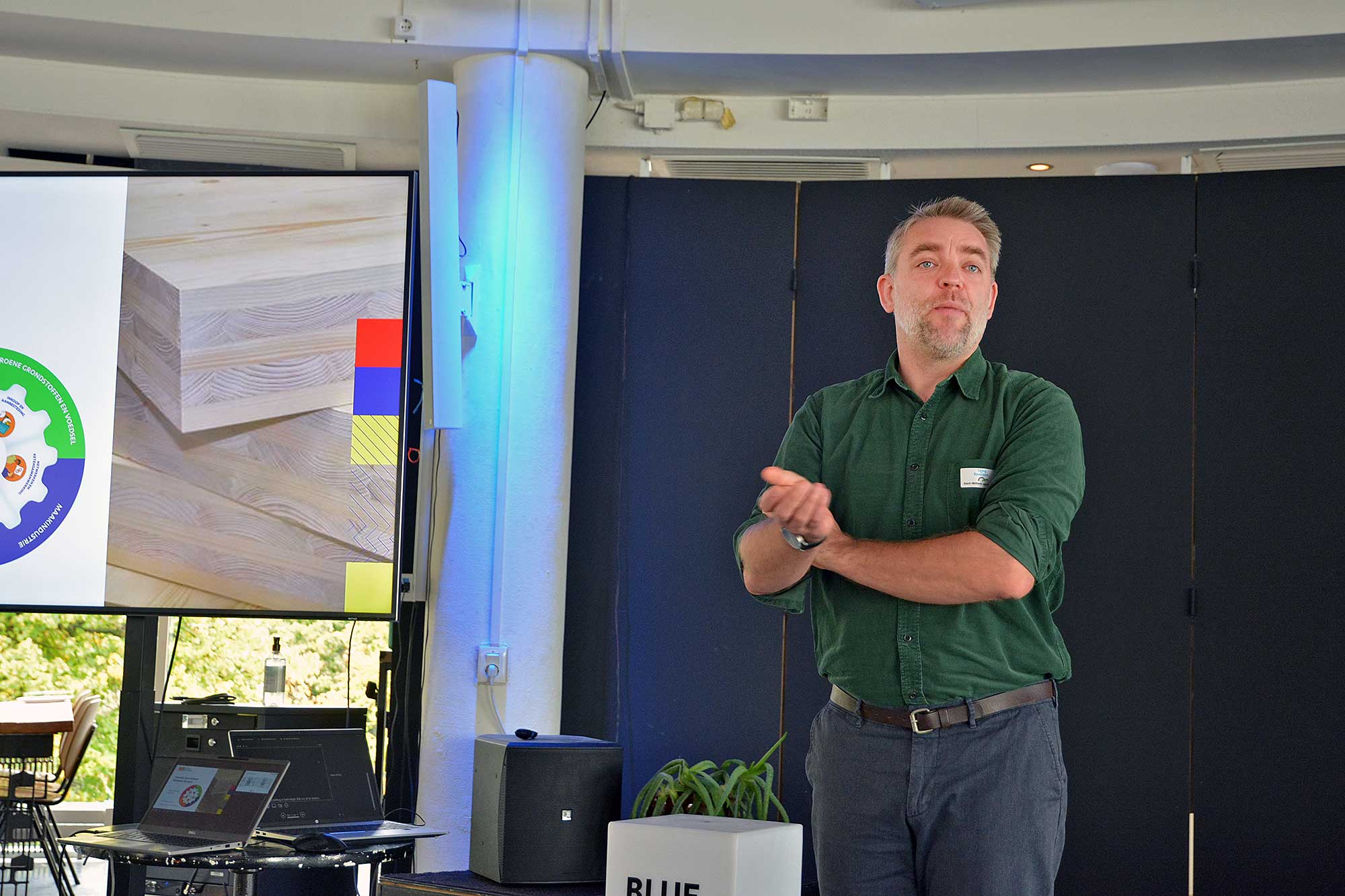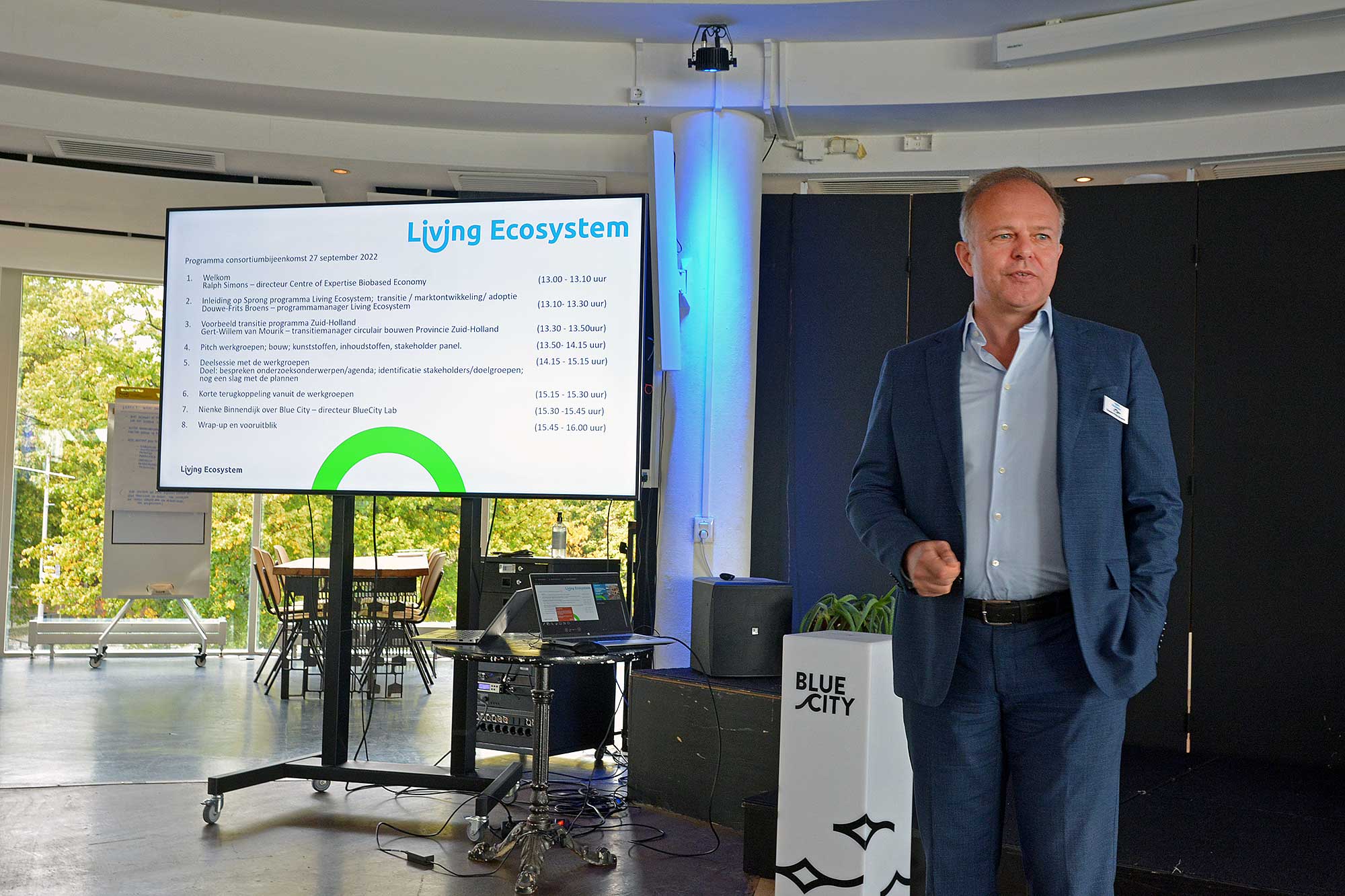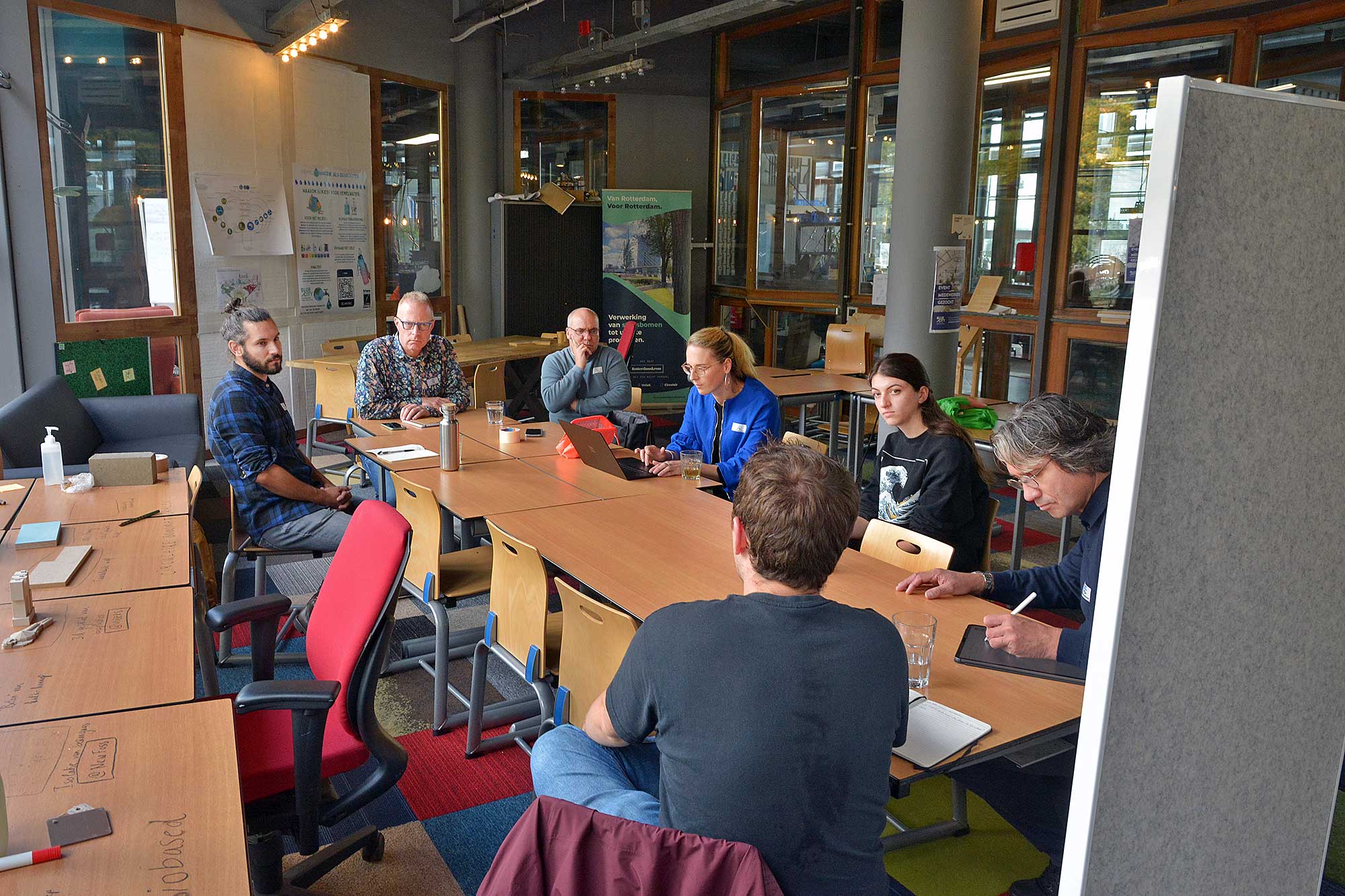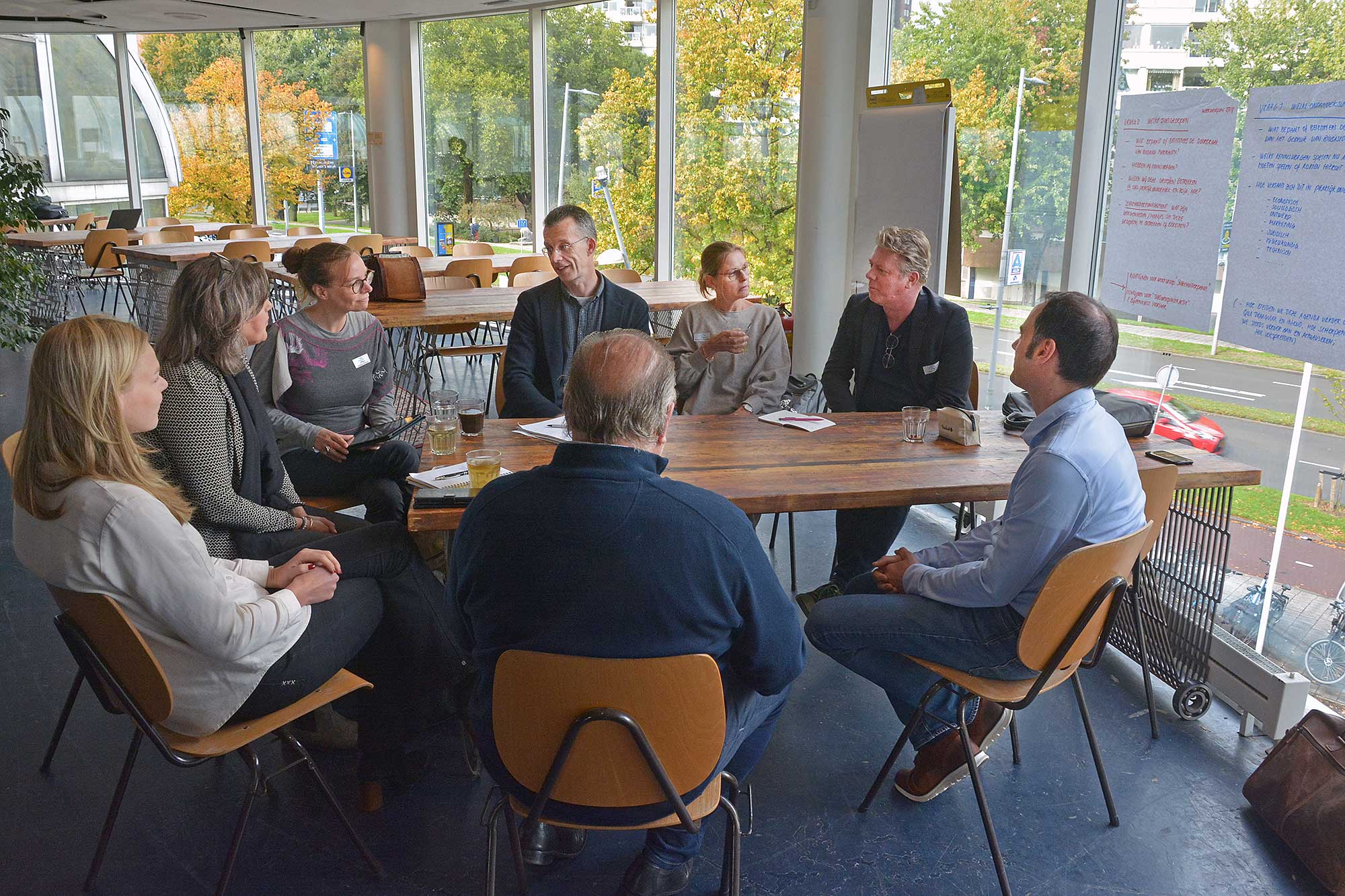In this eight-year programme, Avans University of Applied Sciences, Rotterdam University (HR) and HZ University of Applied Sciences (HZ), together with a broad consortium of governments and companies, are looking for ways to accelerate the transition to biobased materials.
Low tech
Programme leader Douwe-Frits Broens of the Centre of Expertise Biobased Economy emphasised during a recent meeting at Blue City in Rotterdam that Living Ecosystem is certainly not only about innovative high-tech materials that have years of development ahead of them, but also about low-tech materials that have been used by people for centuries, such as wood, flax or hemp. “We are used to focusing on innovations by SMEs, on start-ups with ground-breaking ideas, but do we really need that for economic growth, for getting the market moving? I don’t know. In any case, what is clear is that the transition requires different research questions and methods, different facilities and different research coalitions.”
Living Ecosystem is now actually getting underway after a period of preparation, so the meeting in Rotterdam was mainly aimed at drawing up an agenda of topics that will be worked on in the coming eight years. It is necessary to make choices: who is going to do what and why, what should be the vision for the future? By now, four areas of interest have been defined: ingredients, biobased and circular building, bio-based plastics and stakeholder science (involving stakeholders in research).
Making choices
The Dutch Province of South Holland has already gathered some of those stakeholders in the Innovators’ Network Biobased Construction: architects, construction companies, manufacturers, educational parties, housing corporations and municipalities are working together on the biobased transition.
“Now we are in the phase of making breakthroughs visible with this network, showing what this transition can mean,” says Gert-Willem van Mourik, transition manager Biobased Construction of the Province of South Holland. He adds that we do need to be realistic: “Grant providers like to hear that you are working on scaling up, but I think we are still only in the early stages. We are still experimenting.”
Several Innovators Network projects are currently underway to lead to breakthroughs. Such as a project focused on fibre processing. This will provide new earning models for farmers and market gardeners in the Westland region. They can supply the raw materials for building materials. This will only succeed if the entire chain is addressed: a farmer who produces fibres, chops and dries them must then have a buyer who turns them into an end product. It can be done on a larger scale by cooperating in central hubs. Next, someone also has to want and be able to use these materials in construction. Regulations must make this possible. And education has an important task too: to train people who are familiar with bio-based construction and building materials. “Above all, we must also make this fun, so that more people want to work in construction,” Gert-Willem says.
Similar projects exist, furthermore, in the field of insulation materials and materials to ‘top up’ urban houses with an extra floor; bio-based material is perfectly suited for this, as it is significantly lighter than concrete and steel.
Exercising influence
According to Van Mourik, the network currently consists mainly of architects, builders, governments and knowledge institutions. He is still looking for expansion, especially among farmers and market gardeners. Participation should be of interest to them because, for example, residual flows from the horticular Westland region in The Netherlands are ideal for making bio-based building materials. “By joining now, they are able to collaborate in creating a vision of the future and to influence, experiment, be a forerunner and collaborate with other parties that may not be obvious at first, across the entire value chain. You will get the chance to sit down with executives, to express another opinion than that of the big builders’ lobby clubs. Moreover, you will come into contact with parties who are willing to be first (‘launching’) customers. Municipalities, provinces and the state are also increasingly daring to take on the role of instigators. So you will be in the front row with us when new tenders come up.”
Small steps
One of the entrepreneurs who has accepted the challenge is Willem Kemmers. He participates in Living Ecosystems as director of his own start-up Impershield, but also as a leader of the biobased programme of the stakeholder organisation Greenport West-Holland. “I think it is important that higher education does research with students or that students are trained from practical situations,” he says. “This is why I spend time on this. I am also constantly busy running projects with the knowledge institutions. If I get the idea that teaching or research is starting to become a bit too theoretical, I am very happy to put down a practical example, to show what I am up against as an entrepreneur. Especially to shape the link with practice, but also to build a bond with like-minded people in the network. I see Living Ecosystem as a programme that prepares for the green transition, but at least keeps one leg in today’s society. And that is what we need, because we will not make the turnaround from linear and fossil to circular and green in one go. We need to make small steps.”
Will van den Tweel, director of BioScienz, participates in Living Ecosystems because he sees opportunities in it for his own projects. “For instance, we are working on mycelium-based alternatives for leather and textiles. We are also looking at converting agri-food residue streams to animal feed and to food. And we looking at packaging materials. We are working on various fronts.”
Van den Tweel does think there is still work to be done to create a coherent agenda for this project. The various areas of interest overlap and are not yet clearly defined, he judges. “It could be a bit more coherent. In an eight-year programme, we should take some time for exploration and try to bring the many themes together into a few topics that bind us all. There is work to be done for next meeting!”
To be continued
The SPRONG Living Ecosystem programme has officially started in January 2022 and will run until 2030. Besides agenda-setting, it also pays attention to quality of research and facility sharing. This also involves students and teachers, companies and buyers.
The agenda-setting consultation will be repeated every year. Douwe-Frits Broens thinks it is important that the agenda initially reflects experiences from the different practices of, for example, construction, packaging or dyes. This leads to topics on which research and education can innovate. From there, potentially overarching themes, such as waste regulation, can emerge.
Interested in participating? Apply to Douwe-Frits Broens, Living Ecosystem programme manager, Centre of Expertise Biobased Economy.
This article was produced in cooperation with the Centre of Expertise Biobased Economy.

